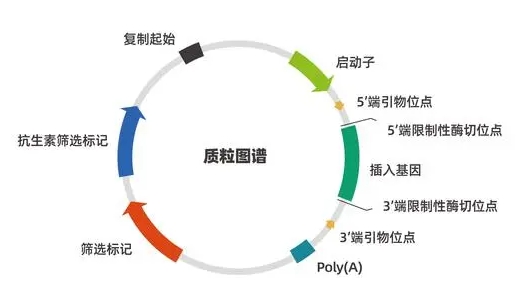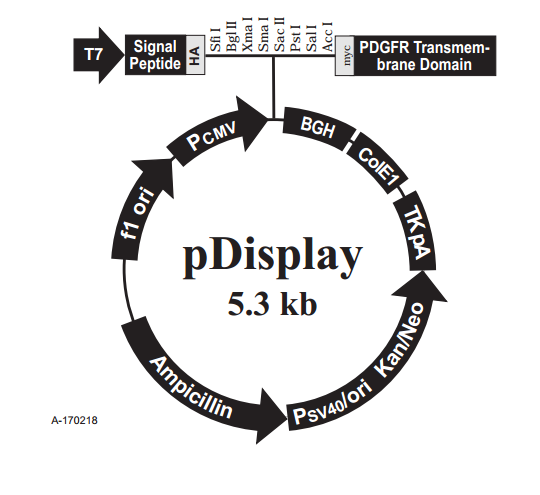pDisplay哺乳动物表达载体



pDisplay? is a mammalian expression vector designed to target recombinant proteins to the surface of mammalian cells. Displayed proteins can be analyzed for their ability to interact with known or putative ligands. Proteins of interest are targeted and anchored to the cell surface by cloning the gene of interest in frame with the vectors unique N-terminal secretion signal and the C-terminal transmembrane anchoring domain of platelet-derived growth factor receptor (PDGFR). In contrast to phage display vectors which operate exclusively in prokaryotic cells, the pDisplay? vector offers the advantage of having the displayed protein of interest processed in mammalian cells. Therefore, recombinant proteins of eukaryotic origin that are expressed from pDisplay? more closely resemble their native form. This may favor more accurate ligand binding interactions. In addition to the N-terminal cell surface targeting signal and C-terminal transmembrane anchoring domain, the pDisplay? vector contains the following key features:
? T7 promoter/priming site for in vitro transcription of sense RNA and for sequencing of inserts
? Neomycin resistance marker for stable selection in mammalian cells using Geneticin?
? SV40 origin for replication and simple vector rescue in cell lines expressing the large T antigen (e.g., COS-1 and COS-7)
? Ampicillin resistance gene for selection in E. coli

基因搜项目发展历程最早可追溯至2010年01月05日域名注册,项目发起即为促进基因资源共享,避免在基因研究工作中“重复造轮子”,节约广大科研精英的宝贵时间和精力。
让基因研究更简单!
您值得信赖的一站式基因研究合作伙伴!